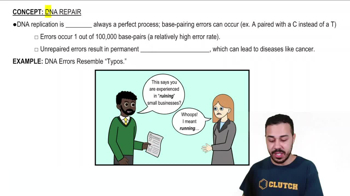Textbook Question
Evaluate the following statements related to the synthesis of nucleic acids. Select True or False for each statement.T/F Ribonucleotides are added to the 3′ end of a DNA strand.T/F Polymerization of nucleic acids occurs by the formation of phosphodiester bonds.T/F Complementary pairing between sugars is required for copying nucleic acids.T/F Strands in a double helix are synthesized in an antiparallel orientation.
1318
views





